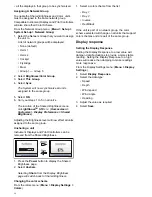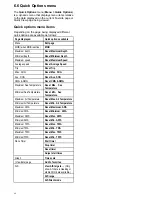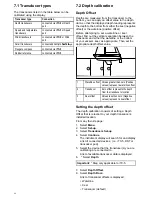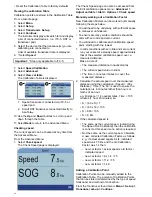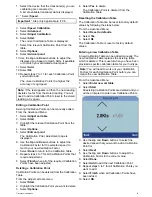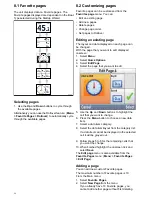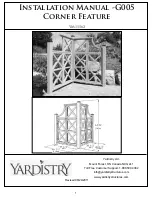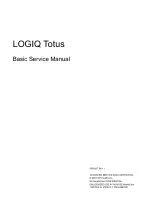
Measuring a nautical mile
1.
Starting point (start stopwatch)
2.
Measured mile
3.
End point (stop stopwatch)
4.
First pair of markers
5.
Second pair of markers
To provide a more accurate reading the vessel
should make between 4 to 6 runs in both directions
to allow for tide and wind conditions. The average
of the time taken over all runs should be used to
calculate Log Speed.
The vessel speed can then be worked out by taking
the distance travelled (1 nautical mile) and dividing it
by the average time taken to perform the run . The
resulting calculation is your average speed in knots.
Performing a Speed Run Calibration
using SOG
If a higher level of precision is required than
that achieved with the 1 Point Speed Calibration
procedure, a Speed Run Calibration should be
performed. The Speed Run Calibration will ensure
that the Log Speed reading is accurate over the
vessel’s full speed range.
Prerequisites:
• SOG data must be available.
• You will need to be underway, with sufficient space
to maneuver unhindered.
• In order to achieve accurate results, water
conditions must be calm with zero tide and zero
current.
Note:
Speed Run Calibration is not available when
connected to a Speed Pod.
The steps below detail the method of calibrating:
• speed transducers connected via an iTC-5
• the speed element of a smart transducer
connected directly to the SeaTalk
ng
network.
From a favorite page:
1. Select
Menu
.
2. Select
Set-up
.
3. Select
Transducers Set-up
.
4. Select
Continue
.
The instrument display will search for and display
a list of connected devices. (i.e. iTC-5, DST or
transducer pod)
5. Select the device that the transducer(s) you are
calibrating are connected to.
A list of available transducer data is displayed,
6. * Select
Speed
.
Important:
* Step only applicable to iTC-5.
7. Select
Speed Calibration
.
8. Select
New cal using SOG
.
You will need to add calibration points at a range
of speeds spanning the full speed range of the
vessel. Conventional transducers can have up to
5 calibration points and smart transducers can
have up to 8. Ideally the calibration points should
be taken at regular increments throughout the
speed range with the last calibration point being
close to the vessel’s top speed.
With the Speed Transducer connected to a
Speed Pod the 5 calibration points are fixed in
sequence at 2, 4, 8, 16 and 32 knots. When
adding calibration points during the Speed Run
Calibration ensure vessel speed is as close to
the fixed calibration point speeds as possible, as
the calibration factor applied will be the difference
between the actual vessel speed and the fixed
calibration point speed.
9. Select
Start
.
10. Ensure the vessel’s speed is steady at your first
calibration point speed and select
Add
.
11. Repeat step 10 for all remaining calibration
points, ensuring that the calibration points are
equally spaced throughout your vessel’s speed
range from stationary to top speed.
Once all calibration points have been successfully
added the Calibration complete message is
displayed.
12. Select
Ok
.
Calibration Table
By default Speed Transducers include a default
set of calibration points which are overwritten
during the normal speed calibration process. The
calibration points are stored in the Calibration Table.
The Calibration Table can be accessed from the
Advanced Menu.
From the Advanced Menu you can:
• View the existing Calibration Table
• Adjust the existing calibration points (Add, Edit or
Delete calibration points)
• Enter a new Calibration Table
• Check Log Speed against SOG
Transducer calibration
45








